Why did my succulent change colors?
As succulents receive proper care, you may notice a change in color. This is completely normal! Find out what can cause such a color change.
Succulents and Sunshine is reader supported. We may earn a commission, if you purchase through links on our site, such as Mountain Crest Gardens, Amazon, or Etsy. We only promote products we use and trust.
When you look at pictures online, you see many colorful succulents used in arrangements. Generally succulents are very colorful when newly purchased as well. However, over time the colors often fade or change. In my experience, many end up turning green after a few months. This is very normal and can be caused by a few different things.
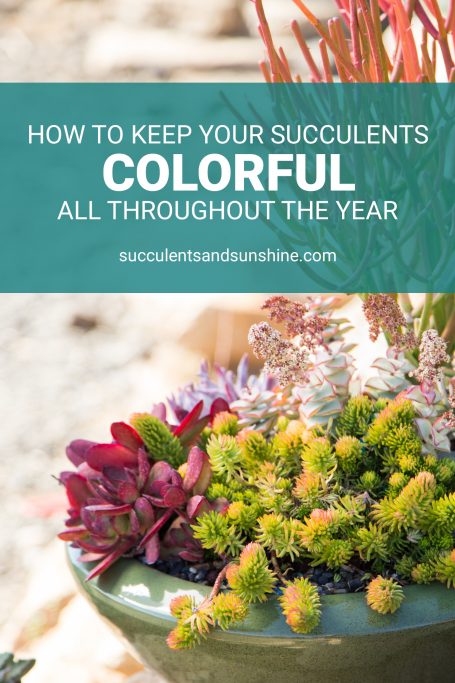
Amount of Light
Just as succulents stretch out from not getting enough light, they may also lose their vibrant colors. Succulents such as Sedum nussbaumerianum need bright sunlight all day in order to maintain their bright colors.
When grown in the shade or in areas that don't get bright light all day, such as indoors, they will slowly fade to green. It doesn't mean they aren't healthy though. They will continue to grow and reproduce, but unless they get more sunlight they will stay green.
This is the same “Jade” plant below, but one side of it gets bright sunlight all day while the other is shaded by a tree. The coloring is so different! The red tips are so much brighter and thicker on the side of the plant in full sun.
You'll also notice more variegation and hints of yellow in the full sun plant. The side in the shade still has hints of these colors but they are not as noticeable.
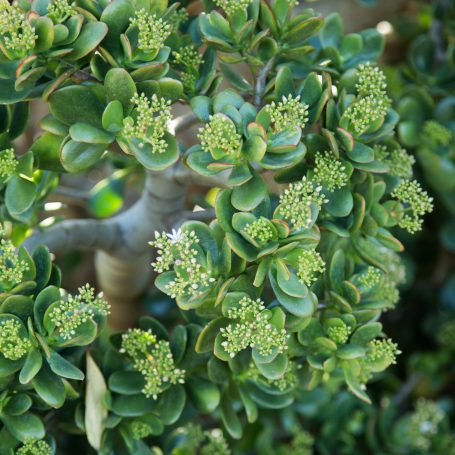
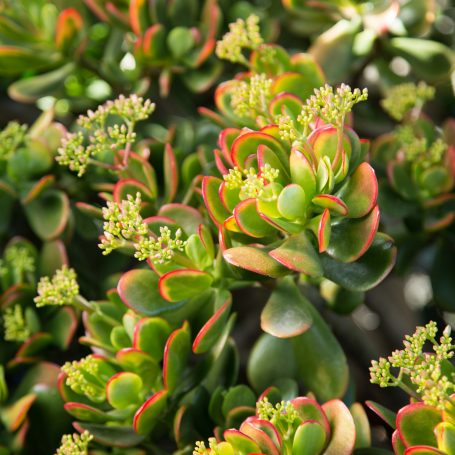
Perfect Watering
Interestingly, perfectly watered succulents often revert to a green color. A little “stress” from not quite enough water can actually cause succulents to “blush” or change colors. I found this to be especially true with my “Gollum Jade“.
When it was getting plenty of water in a cool (but not cold) environment, it stayed a deep green color. When I forgot to water it and the soil had been completely dry for a few weeks, it turned more of a light green with reddish-orange tips.
In the pictures below you'll first see the stressed plant and then the same type of plant that has had very regular watering.
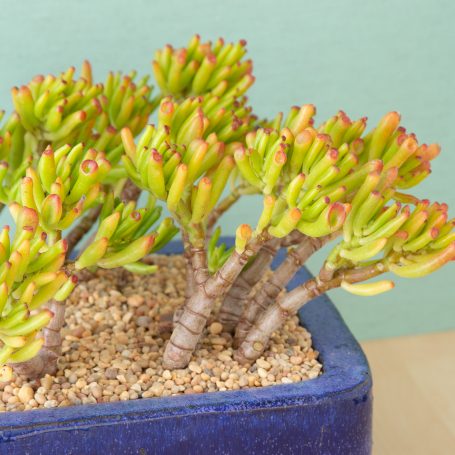
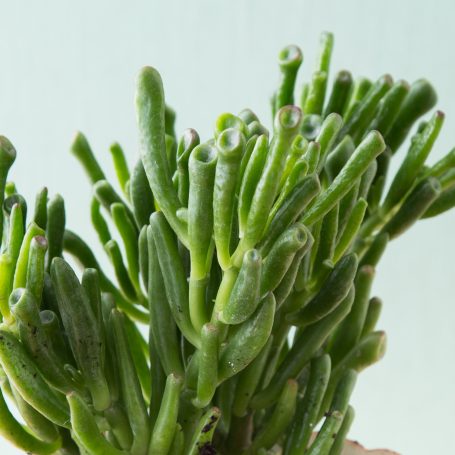
If you know a succulent could be a different color than green, try letting the soil dry out for a little longer than normal and see what happens!
Cold Temperatures
Another way to “stress” succulents into changing color is cold weather. The ideal temperature for most succulents is somewhere around 70 degrees fahrenheit. As the temperatures drop (but stay above 40 degrees) you'll notice many colors will start to intensify.
I visited San Diego over the winter and noticed that the Euphorbia 'Sticks on Fire' were especially orange and vibrant and the Senecio mandraliscae were a very deep blue. These colors are accentuated from the cold (but not freezing) temperatures over an extended period of time.
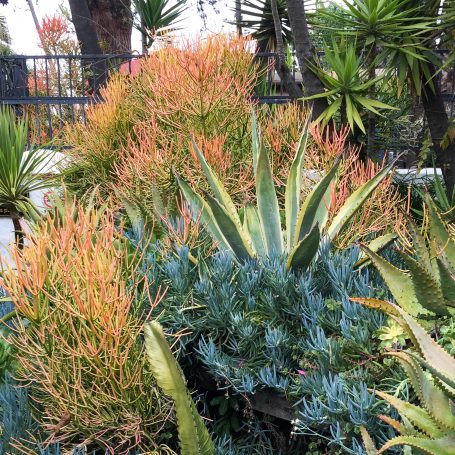
This Aloe was one of the most colorful succulents I saw while I was down there. It's amazing what the cold weather can do to succulents!
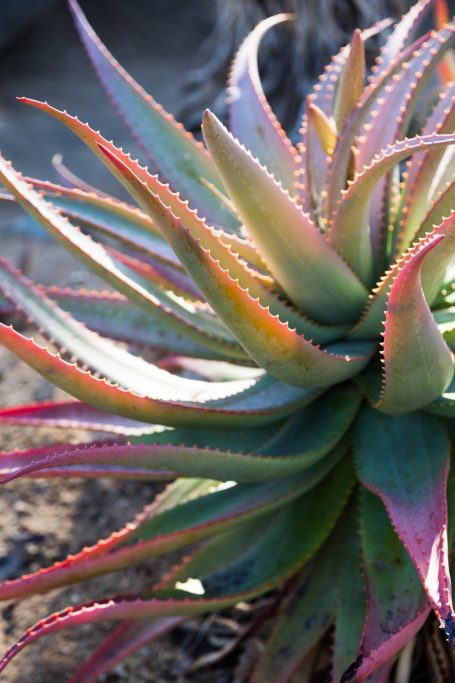
Succulents are really interesting plants and it amazes me how much they can change based on how they are cared for. I'm always a little envious of the colorful succulents I see in southern California gardens!
While I do all I can to give my succulents plenty of sunlight it seems indoors there just isn't enough to keep them bright and colorful all year. I do my best by letting the soil stay dry (sometimes out of forgetfulness) and put them out in the sun once it's warm enough to do so.